
Education
Blue Sapphire
Blue Sapphire (Neelam) one of the most popular gem stone is also variety of Corundum. One of the second hardest mineral available. As its made of densely packed oxides, its density is high.
Blue Sapphire too belong to trigonal crystal system and available mostly in bi pyramidal rough form.
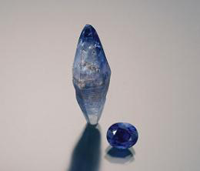 Blue colour in Blue Sapphire is due to traces of iron and titanium with aluminium oxide. It ranges from very light to very dark violetish blue or greenish blue, velvety blue colour, such colour sapphire with medium to medium dark stone fetch high price.
Blue colour in Blue Sapphire is due to traces of iron and titanium with aluminium oxide. It ranges from very light to very dark violetish blue or greenish blue, velvety blue colour, such colour sapphire with medium to medium dark stone fetch high price.
Best quality star sapphire are very rare and valuable.
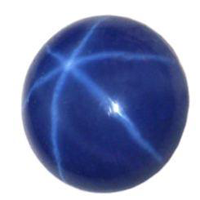 Many treatments are done on low quality and lighter colour Blue Sapphire to raise its value. Such as heating, lattice diffusion. Some blue sapphire give out good colour while some don’t , depending upon sources.
Many treatments are done on low quality and lighter colour Blue Sapphire to raise its value. Such as heating, lattice diffusion. Some blue sapphire give out good colour while some don’t , depending upon sources.
Synthetic Blue Sapphire are grown with same process like other varieties of corundum are grown. Processes are flame fusion, flux, crystal pulling and hydrothermal. Laboratory test is a must to identify them.
Three important sources for Blue Sapphire are , the very first and most demanded is Kashmir, other are Burma , Srilanka, Thailand, Combodia, Veitnam and China
EMERALD
When we see a green colour stone what first come to our mind is Emerald (Panna).
It’s a variety of Beryl species. Though brittle by nature , as it a silicate. Still praised and valued a lot if the colour is bluish green to green with strong to medium to medium dark tone.
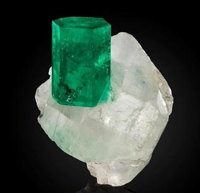 Emerald belong to hexagonal crystal system and mostly available in prismatic form.
Emerald belong to hexagonal crystal system and mostly available in prismatic form.
Green colour of Emerald is due to high chromium or vanadium present. Traces of iron gives it blue shade to pure green colour.
Phenomenal emeralds are very rare and valued a lot. Like trapiche and emerald cat’s eye.
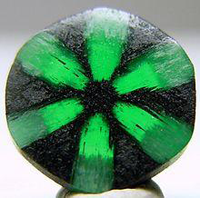
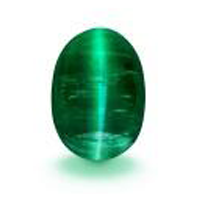 Fracutre filling is the age old treatment done on Emerald. The fractures are either filled with different types of oil or resin.
Fracutre filling is the age old treatment done on Emerald. The fractures are either filled with different types of oil or resin.
Synthetic Emerald is grown either by flux process or hydrothermal process. Hydrothermal process is more near to the natural growth process of emerald.
The major source of emerald , which is valued and demanded a lot is from Colombia. The well know sources are Zambia, Brazil, Zimbabwe and Afghanistan.
YELLOW SAPPHIRE
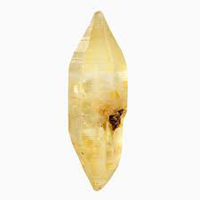 Yellow Sapphire (Pukhraj) is another variety of corundum. Second hardest mineral available on earth. Having heavy density of densely paced oxide.
Yellow Sapphire (Pukhraj) is another variety of corundum. Second hardest mineral available on earth. Having heavy density of densely paced oxide.
Yellow sapphire too belong to trigonal crystal system. It is available in barrel or bipyramidal shape rough crystal.
Yellow colour of Sapphire is due to presence of iron traces in aluminium oxide. It is available in either darker or lighter shades depending on amount of iron and tone can vary from greenish to orangish yellow with different degree of saturation.
Yellow Sapphire can also show phenomena like star or trapiche if inclusions are set in such a way naturally which raise its rarity and value.
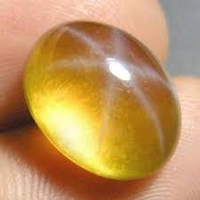 Same synthetic processes are used to manufacture it artificially as synthetic ruby is made. Like flame fusion, crystal pulling, flux and hydrothermal.
Same synthetic processes are used to manufacture it artificially as synthetic ruby is made. Like flame fusion, crystal pulling, flux and hydrothermal.
Major sources of Natural Yellow Sapphire is Srilanka. Other emerging sources are Africa, Thailand, Australia and Montana.
RUBY
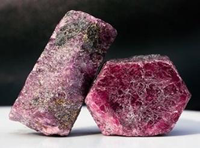 Ruby is a variety of Corundum species. The second hardest mineral. As its made of oxide, makes it heavier.Ruby grow either in barrel shape or bipyramid or tabular form/shape
as it belong to Trigonal crystal system. ruby is red due to chromium traces in aluminium oxide. It has different shades of red with or without tone of purple.
Ruby is a variety of Corundum species. The second hardest mineral. As its made of oxide, makes it heavier.Ruby grow either in barrel shape or bipyramid or tabular form/shape
as it belong to Trigonal crystal system. ruby is red due to chromium traces in aluminium oxide. It has different shades of red with or without tone of purple.
 Ruby showing different phenomena like star are very valuable and rare.
Ruby showing different phenomena like star are very valuable and rare.
Many treatments are done on ruby to increase its appearance /look and value . Like heat treatment fracture filling, diffusion and dying.
Synthetic rubies are one which is made by man and not found under the earth. Different process like flame fusion, flux, crystal pulling and hydrothermal is used to make synthetic ruby. Ruby made by these process look exactly like natural ruby as it share same physical , chemicaland optical properties, but differ in inclusions to separate them from natural true ruby.
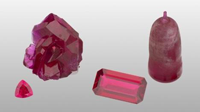
Rubies are available in many different parts of world. The most important source and valued highest are from Myanmar (Burma) .
 Other soures are Thailand, Combodia, Vietnam, Africa, Sri Lanka, Afghanistan, Pakistan and Nepal.
Other soures are Thailand, Combodia, Vietnam, Africa, Sri Lanka, Afghanistan, Pakistan and Nepal.
